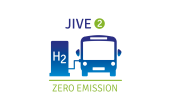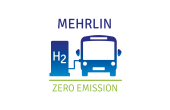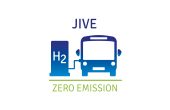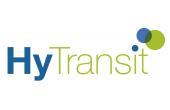- A hybrid vehicle uses two or more distinct types of power, such as:
- an internal combustion engine and batteries or ultracapacitors in diesel hybrid vehicles.
- a fuel cell and batteries in fuel cell hybrid vehicles.
- an overhead electric line and batteries in Trolley hybrid buses.
- There are two different types of hybrid systems:
- parallel and series hybrids
- In a parallel hybrid bus, the combustion engine and the electric motor are connected to the transmission independently. The electric motor is designed to provide power during stop-and-go traffic while at highway speeds the vehicle is powered solely by the internal combustion engine. During acceleration, both the electric motor and the combustion engine power the transmission.
- A series hybrid bus is exclusively propelled by the electric motor. In a series hybrid bus, the internal combustion engine (ICE) is connected to an electric generator which converts the energy produced by the ICE into electric power. This electricity powers a motor which turns the wheels of the vehicle. The generator also recharges a battery pack which provides supplemental power to the motor. Since the ICE is not connected to the wheels, it can operate at an optimum rate and can even be switched off for short periods of time for a temporary all-electric operation of the bus.
- Advantages of the fuel cell series hybrid. Fuel Cell series hybrid is the best solution for stop-and-go urban transport:
- Zero tailpipe emission in city traffic
- High comfort due to the electric traction : no gear shifts which means no jerks in the bus during acceleration and braking
- Very silent for passengers in and outside the bus
- No vibrations compared to combustion engines
- Regenerative braking: depending of the battery characteristics, the fuel consumption decreases dramatically compared to a full fuel cell bus. The fuel efficiency of hybrid FCEB was measured to be double as good as dedicated fuel cell buses (such as in the CUTE = Clean Urban Transport in European cities programme).
- Compared to other zero emission solutions (i.e trolley buses or some opportunity charged batterie buses), there is no visual pollution (catenary lines or charging poles)
- Due to the perfect designed balance between battery power drive, fuel cell drive and combined drive, the FCE buses have an autonomy of a 16 hour service day. This balance can be perfectly adapted in function of specific circumstances in every city. (topography, highway driving, step foot traffic, number of traffic lights, a.s.o.).
- Very high efficiency of the fuel cell.






